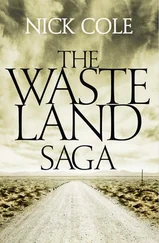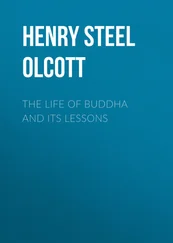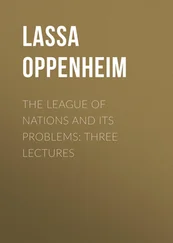William Bryan - The Old World and Its Ways
Здесь есть возможность читать онлайн «William Bryan - The Old World and Its Ways» — ознакомительный отрывок электронной книги совершенно бесплатно, а после прочтения отрывка купить полную версию. В некоторых случаях можно слушать аудио, скачать через торрент в формате fb2 и присутствует краткое содержание. Жанр: foreign_antique, foreign_prose, на английском языке. Описание произведения, (предисловие) а так же отзывы посетителей доступны на портале библиотеки ЛибКат.
- Название:The Old World and Its Ways
- Автор:
- Жанр:
- Год:неизвестен
- ISBN:нет данных
- Рейтинг книги:4 / 5. Голосов: 1
-
Избранное:Добавить в избранное
- Отзывы:
-
Ваша оценка:
- 80
- 1
- 2
- 3
- 4
- 5
The Old World and Its Ways: краткое содержание, описание и аннотация
Предлагаем к чтению аннотацию, описание, краткое содержание или предисловие (зависит от того, что написал сам автор книги «The Old World and Its Ways»). Если вы не нашли необходимую информацию о книге — напишите в комментариях, мы постараемся отыскать её.
The Old World and Its Ways — читать онлайн ознакомительный отрывок
Ниже представлен текст книги, разбитый по страницам. Система сохранения места последней прочитанной страницы, позволяет с удобством читать онлайн бесплатно книгу «The Old World and Its Ways», без необходимости каждый раз заново искать на чём Вы остановились. Поставьте закладку, и сможете в любой момент перейти на страницу, на которой закончили чтение.
Интервал:
Закладка:
Most travelers land at Yokohama and depart at Kobe, or land at Kobe and depart at Yokohama, these being the two principal ports. As these are about 300 miles apart, one has a chance to see much of the farming land from the railroad. The side trips from Tokyo to Nikko, from Yokohama to Miyanoshita and from Kyoto to Nara, give additional opportunities for seeing the farmer at work, but the ride from Kobe west to Shimonoseki surpasses any of these in interest and in beauty of scenery. As this route leads along the sea coast as well as through densely populated valleys, there is greater variety. Now one skirts the inland sea, with its numerous islands, its transparent waters, its little harbors and its fleets of fishing boats; now he winds his way along a stream with falls and rapids and spanned by frail foot bridges or by stone wagon bridges. On the one side he sees a bamboo grove and on the other a tiny graveyard or a little hill dedicated to a Shinto shrine – stone steps ascending along a shaded path from the sacred gate, which invariably marks the entrance to holy ground. In passing over this railroad route one gathers a large amount of information concerning the industries of the sea coast, as well as those of the inland, and besides one can visit the Shimonoseki Strait which is of historic interest to Americans. The Sanyo railroad, which connects Kobe and Shimonoseki, is well equipped and well managed and has built an excellent hotel, The Sanyo, at Shimonoseki for the accommodation of its patrons. From this point a steamer runs to Fusan, the nearest Korean port, where direct connection is made for Seoul, the Korean capital. From Moji, just across the strait from Shimonoseki, one can take a train to Nagasaki, the western seaport of Japan. At Shimonoseki one is shown the house in which Marquis Ito and Li Hung Chang drafted the Japanese-Chinese treaty in 1894.
Mining is an industry of considerable importance here. Gold, silver and copper are found in paying quantities. More than six million dollars' worth of copper was exported last year. One of the gold fields on the island of Kyushu, near Kagoshima, gives promise of considerable richness. Coal is found in such abundance that the exports of this commodity have amounted to nearly ten million dollars in a single year. A hard quality of smokeless coal has recently been discovered in western Japan.
The islands also produce a number of varieties of valuable woods. The camphor tree grows to an enormous size, a gigantic statue of the Goddess of Mercy in one of the temples at Kamakura being carved from a single camphor log. The value of the camphor exported from Japan last year exceeded a million and a half dollars. Among the hard woods suitable for carving, cherry seems to be the most popular.
Of all the trees, however, the bamboo is the most useful. Just at this time when the returning soldiers are being welcomed, it is present everywhere in the form of flag poles, and there is nothing that equals it for this purpose; long, slender, light and strong, it is just the thing for flags and banners, and when a little plume of leaves is left at the top, it is still more beautiful. The bamboo is used for water pipes and for fences, for furniture and picture tubes, for dippers, baskets, fishing poles, flower vases, candlesticks, wicker work, etc., etc.
In wood carving the Japanese have long been skilled. Specimens of work done hundreds of years ago and testifying to their taste, no less than to their deftness of hand, may be seen in their ancient palaces and temples.
Stone cutting is also an ancient industry here. There is an abundance of stone and granite, while the lanterns, Korean lions and sacred gates have furnished subjects for many a chisel. Osaka seems to be the center of the stone cutting industry.
The iron industry is represented by an increasing number of establishments. In many instances workmen have been brought from abroad and employed until Japanese artisans were sufficiently trained to take their place. Much of the iron work is still done in little shops and by hand, although machinery is being imported in large quantities.
I visited a tannery at Kagoshima and found that the proprietor had spent seven years in America learning the business, and that on his return he had taught native help each branch of the business. He is now turning out an excellent product.
One of the most promising industries in Japan is cotton spinning. There are a number of factories already in operation and new ones are building. I visited one of the plants of the Osaka Nippon Boseki Kaisha at Osaka. This company has about seventy thousand spindles and the mills employ nothing but native labor. Foreign artisans were used in the beginning, but are no longer needed. A great many women are employed and some children; for the latter a school is maintained for two hours a day in the building. Cotton yarn is now selling for about forty cents a pound and is becoming one of the leading articles of export; China is the largest purchaser. Some idea of the growth of this branch of industry can be gathered from the fact that the exports of cotton yarn amounted to less than four thousand dollars in 1891 and 1892; in 1896 it had grown to over two millions, in 1898 to over ten millions, and during the last two years it has averaged about fifteen millions.
At Osaka I also visited a brush industry and found that from bones, imported from the slaughter houses of America, and from bristles, purchased in Russia and in China, they made tooth, nail and hair brushes for export to both Europe and America. Here, too, they have dispensed with the foreign labor which they employed in the beginning.
Earthenware is manufactured in abundance and of every variety. The exports of porcelain and earthenware reached almost two million dollars last year. In Kyoto we visited a pottery and found two rooms in which the finished product was displayed; the first contained beautiful specimens of Japanese skill, graceful in shape and dainty in decoration; the second was filled with big pieces in loud colors and of inferior workmanship. These last articles, we were informed, were made especially for the American trade.
Some beautiful porcelain work is done in Kyoto, the decoration representing a high degree of artistic skill.
One of the most famous kinds of china produced by Japan is known as Satsuma ware, the glazing of which is of a peculiar tint and has a crackled appearance. The secret of the manufacture of this ware was brought from Korea by the captives taken in war some three hundred years ago, and the industry still flourishes in Japan, although it has perished in Korea. Kagoshima is the center for Satsuma ware, and a colony of Koreans living near there, as well as Japanese manufacturers, produce excellent specimens.
Lacquer work has been done in Japan from time immemorial, samples of which, centuries old, can be seen in temples, palaces and museums. When gold and silver are used in connection with the lacquer the product is often very valuable.
The bronzes produced in the little shops scattered over Japan give play to the artistic taste which one finds here. Osaka and Kyoto are noted for their bronzes. Sometimes various metals are inlaid in the forms of flowers, birds, animals and landscapes, producing a most pleasing effect. Then there are damascene factories and places for embroidery and for pictures made in cut velvet, etc., etc.
No one can pass through Japan without being impressed with the taste, which seems to be national, and with the delicate skill which has been handed down from generation to generation. And nothing, in my judgment, more clearly exhibits this union of taste and skill than the Cloisonne work. Upon a metallic base, as a vase, placque or box, an artist draws a design; this design is then outlined with fine wires of gold and silver, then enamels of various colors are filled in. When the enamels are hardened and the whole polished, the product is a thing of marvelous beauty.
Читать дальшеИнтервал:
Закладка:
Похожие книги на «The Old World and Its Ways»
Представляем Вашему вниманию похожие книги на «The Old World and Its Ways» списком для выбора. Мы отобрали схожую по названию и смыслу литературу в надежде предоставить читателям больше вариантов отыскать новые, интересные, ещё непрочитанные произведения.
Обсуждение, отзывы о книге «The Old World and Its Ways» и просто собственные мнения читателей. Оставьте ваши комментарии, напишите, что Вы думаете о произведении, его смысле или главных героях. Укажите что конкретно понравилось, а что нет, и почему Вы так считаете.












